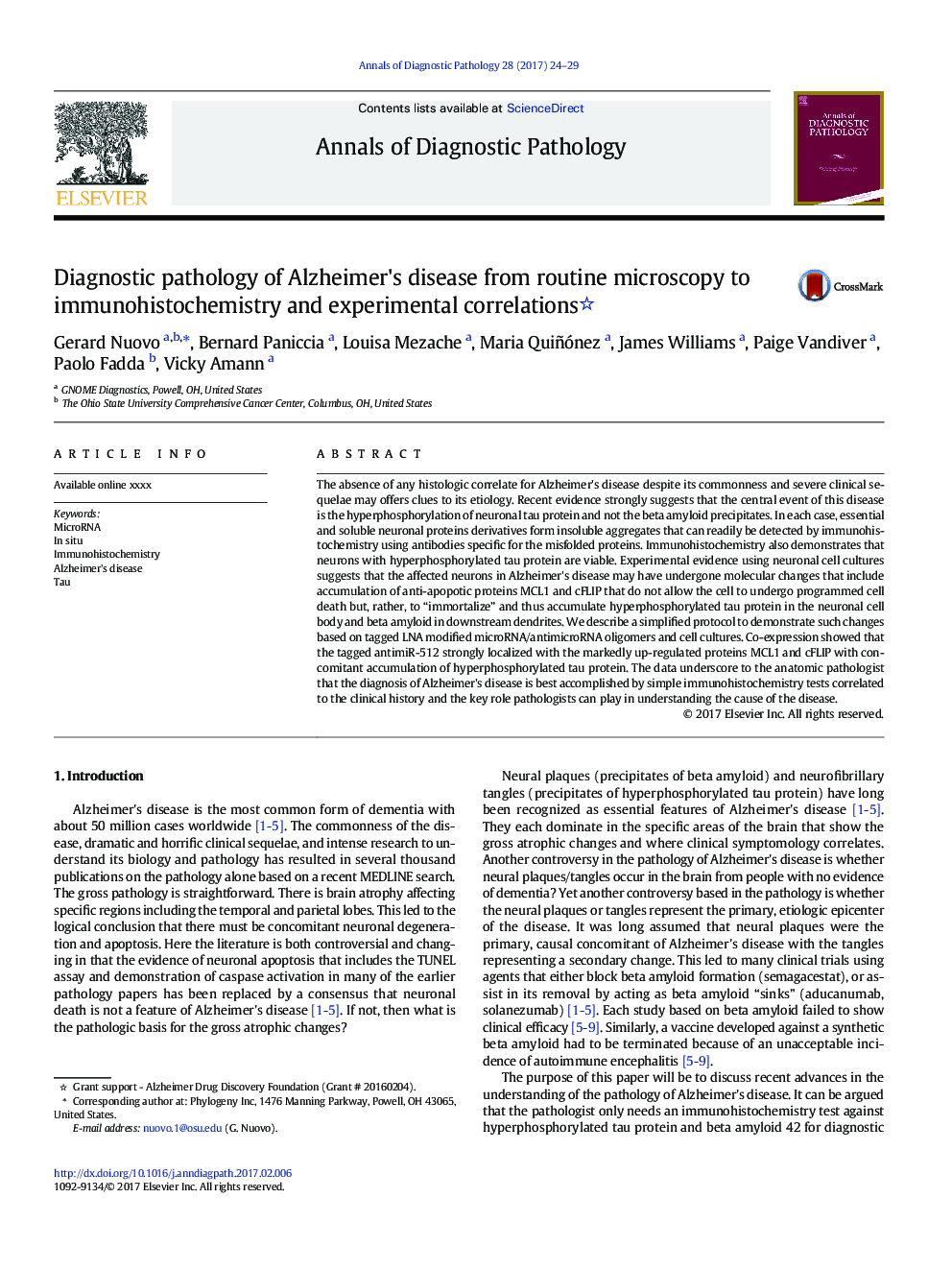| Article ID | Journal | Published Year | Pages | File Type |
|---|---|---|---|---|
| 5715924 | Annals of Diagnostic Pathology | 2017 | 6 Pages |
Abstract
The absence of any histologic correlate for Alzheimer's disease despite its commonness and severe clinical sequelae may offers clues to its etiology. Recent evidence strongly suggests that the central event of this disease is the hyperphosphorylation of neuronal tau protein and not the beta amyloid precipitates. In each case, essential and soluble neuronal proteins derivatives form insoluble aggregates that can readily be detected by immunohistochemistry using antibodies specific for the misfolded proteins. Immunohistochemistry also demonstrates that neurons with hyperphosphorylated tau protein are viable. Experimental evidence using neuronal cell cultures suggests that the affected neurons in Alzheimer's disease may have undergone molecular changes that include accumulation of anti-apopotic proteins MCL1 and cFLIP that do not allow the cell to undergo programmed cell death but, rather, to “immortalize” and thus accumulate hyperphosphorylated tau protein in the neuronal cell body and beta amyloid in downstream dendrites. We describe a simplified protocol to demonstrate such changes based on tagged LNA modified microRNA/antimicroRNA oligomers and cell cultures. Co-expression showed that the tagged antimiR-512 strongly localized with the markedly up-regulated proteins MCL1 and cFLIP with concomitant accumulation of hyperphosphorylated tau protein. The data underscore to the anatomic pathologist that the diagnosis of Alzheimer's disease is best accomplished by simple immunohistochemistry tests correlated to the clinical history and the key role pathologists can play in understanding the cause of the disease.
Related Topics
Health Sciences
Medicine and Dentistry
Pathology and Medical Technology
Authors
Gerard Nuovo, Bernard Paniccia, Louisa Mezache, Maria Quiñónez, James Williams, Paige Vandiver, Paolo Fadda, Vicky Amann,
